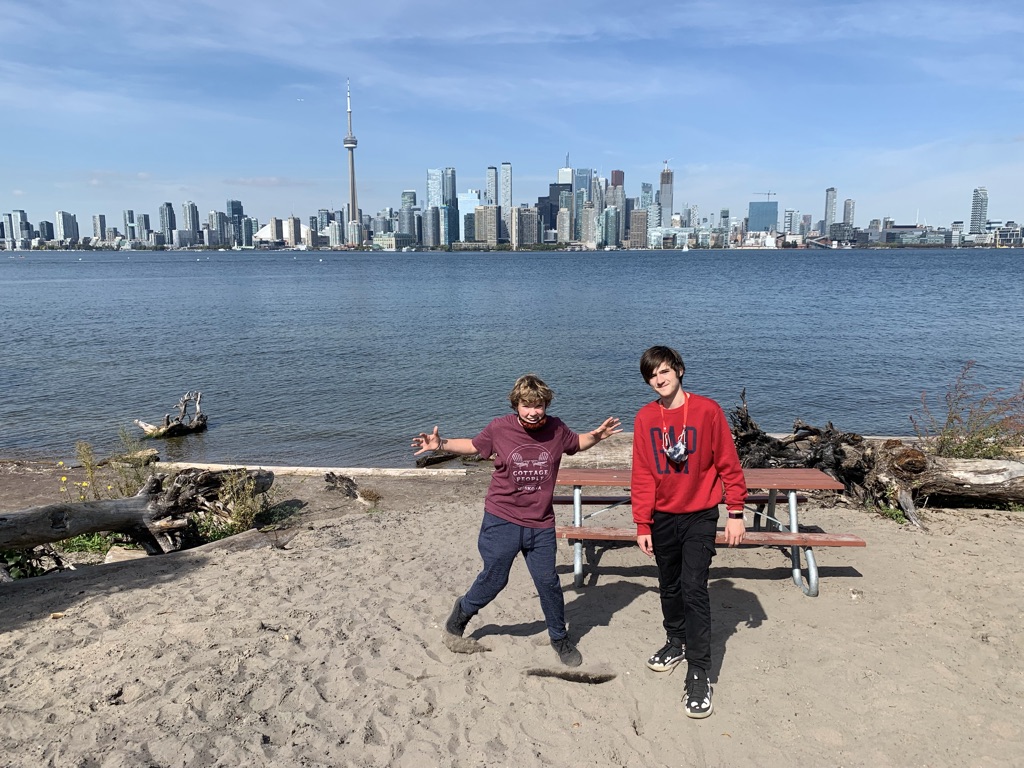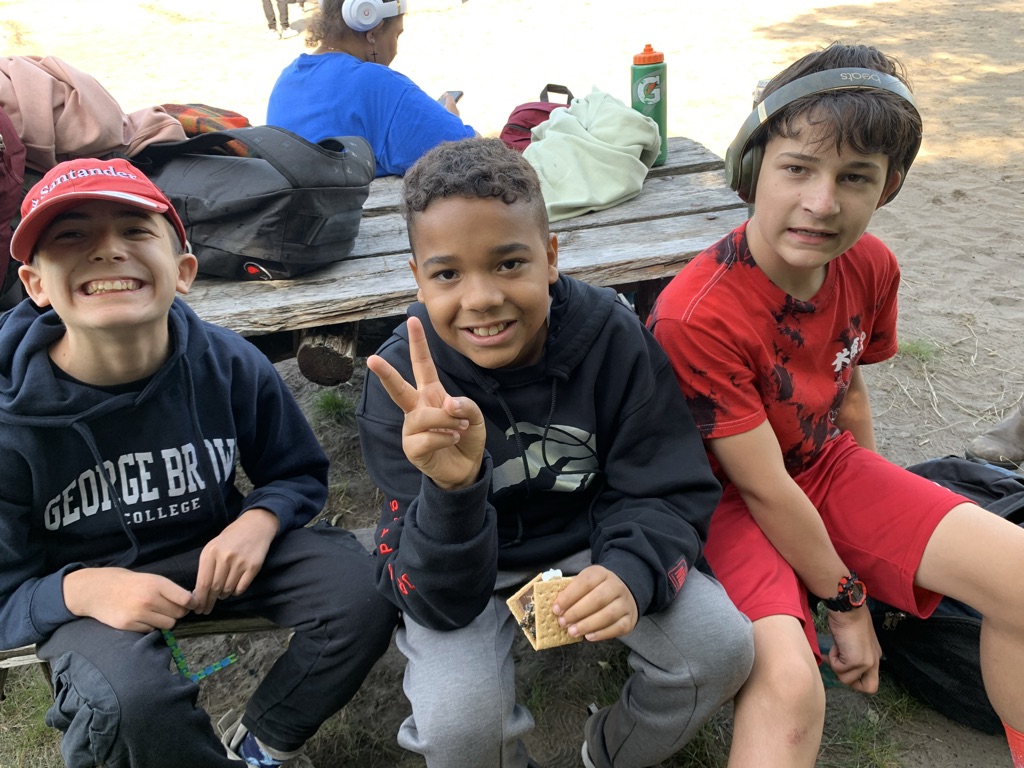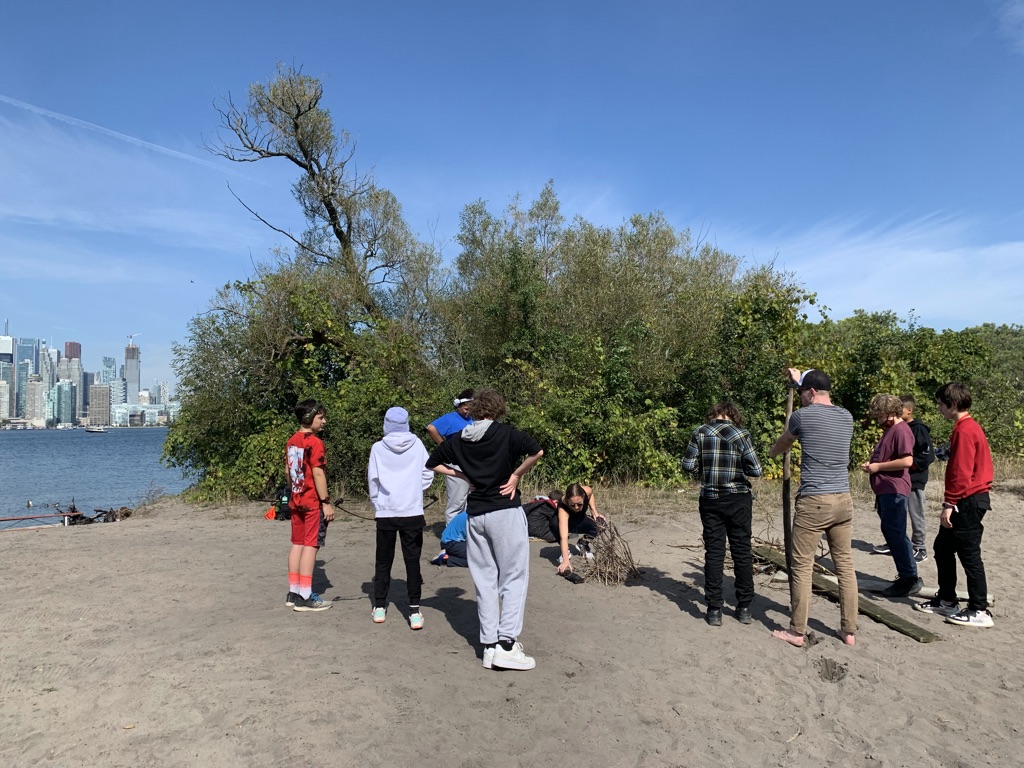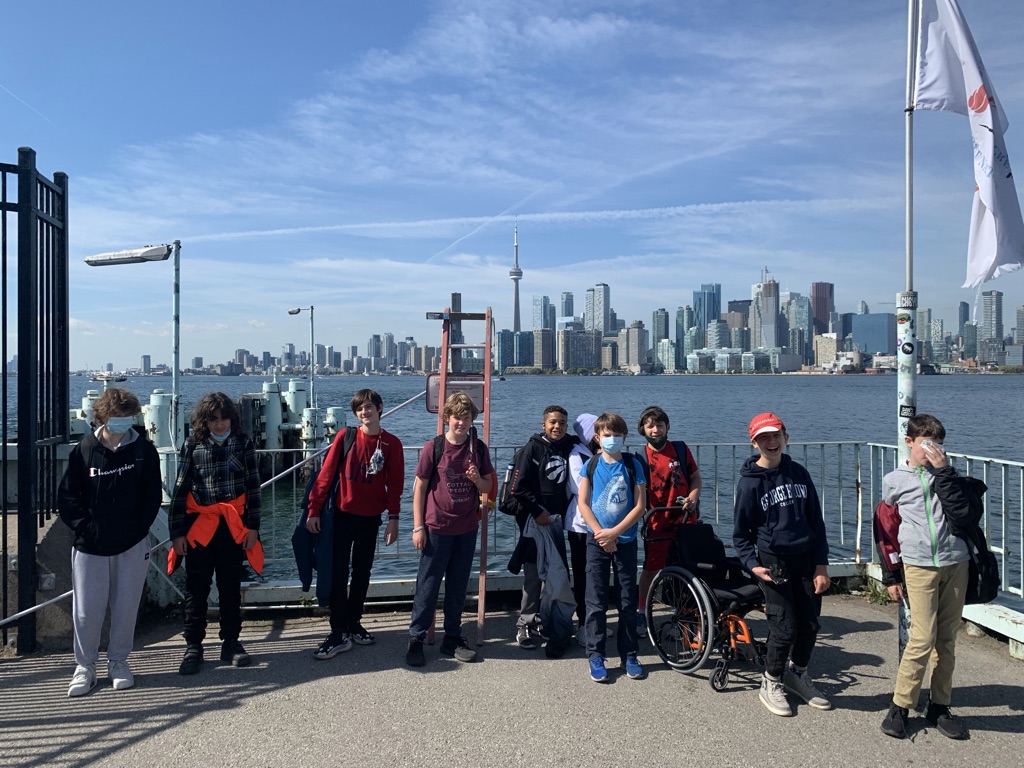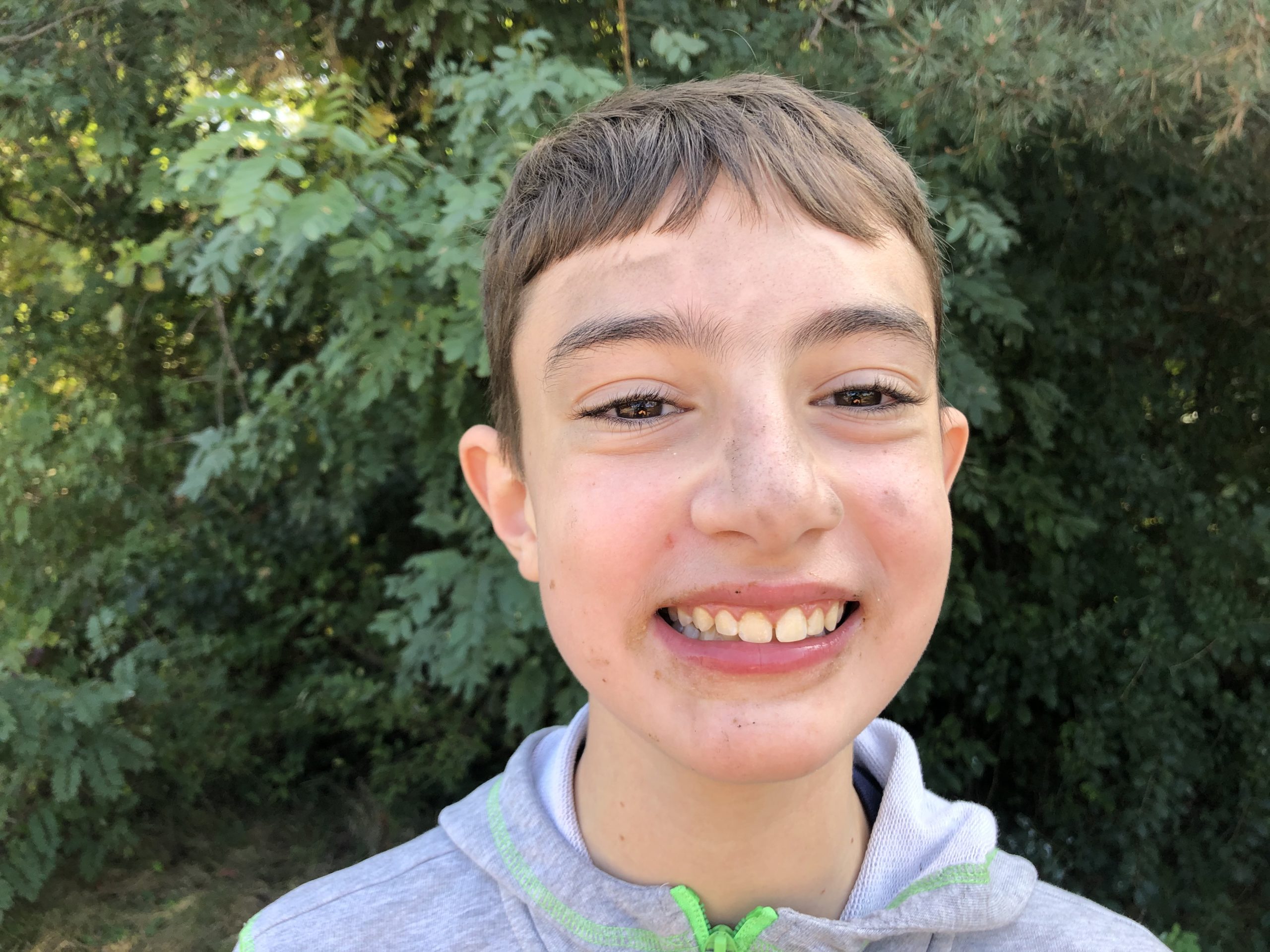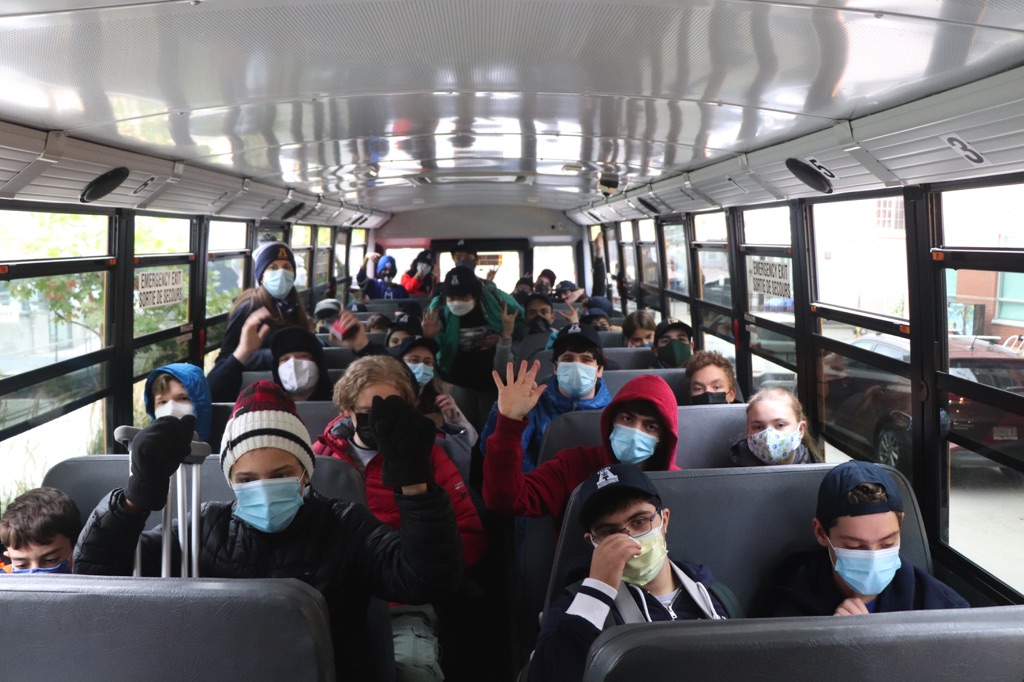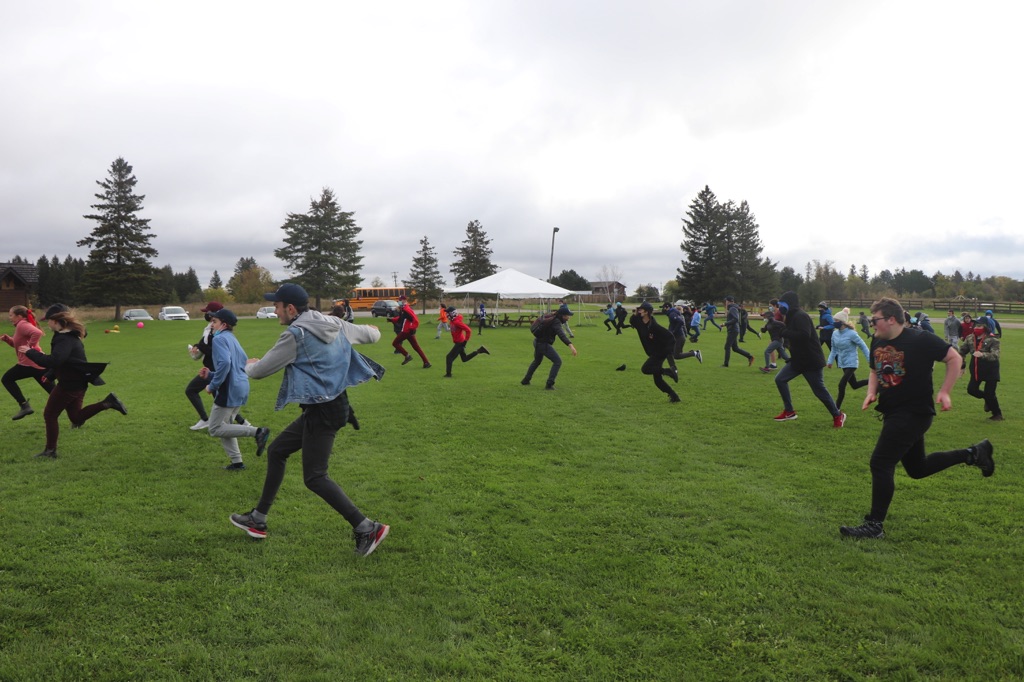What is the Haunted House?
Our class created a haunted train that we called the Train to Corpses (TTC). When you went through all of the stations, you exited the train and were in a fashion show. Staff and students came through our haunted house and used a pretend Presto card as their ticket to come in. The train was a replica of a TTC subway car, except it had fake dead bodies! We set up the chairs in the room to look like the chairs in the subway car and even had marked accessible seating. We had posters and advertisements. We made our own subway map and displayed it above the doors. We made large subway doors. Zoe’s Media Arts class made soundscapes of ‘creepy subway’ sounds and we played that along with a video with the point of view of riding on the front of the subway. We had LED lights and Georgia flickered the lights when people came in. MJ, John and Dayna dressed up as TTC workers too!
The fashion show was in a long hallway. We set up a LED starlight and played upbeat fashion show music. We had homemade ghosts hanging from the ceiling, spider webs throughout and a bloody sign welcoming people to the fashion show. As people came through, Elliott met them and encouraged them to strut down the runway, passing Mark who was hiding in a box. Mark did a jump scare and slammed the door as people were leaving.
Process of making the haunted house
We spoke about what we wanted the theme of the haunted house to be. We discussed some of the roles and responsibilities to create it. We then each did a job and when we finished, we would help another person who needed support. Each of us had our own task:
- Samuel: Painting, taped posters, Train to Corpses (TTC) sign and played a corpse during the haunted house
- Elliott: Co-created and presented the fashion show section of the haunted house with Mark
- Shea: During the haunted house I was in the subway train and did creepy jump scares
- Georgia: I made the doors for the haunted house and worked with Matteo and helped to tape up everything on the day of the haunted house. I sort of helped out wherever I was needed. On the day of the haunted house I flickered the lights to create a creepy vibe.
- Matteo: I painted the subway doors. During the haunted house I wore a mask and shook the chair to scare people.
- Charlie P.: I painted the subway platform using egg cartons and yellow paint. My job for the haunted house was to tour groups through the subway car.
- Nico: I created the ‘next station’ signs and helped other people with their jobs. I was the subway expert and shared specific details about the TTC so our subway looked real! During the haunted house I was a train conductor and yelled out the subway stops as groups were touring through.
- Charlos: I created the posters, painted the subway doors, hung up the different sections of the fashion show and hung up the posters I created. During the haunted house I scared people as they were going through and covered Dayna in spider webs.
- Mark: I helped to paint parts of the fashion show props. During the haunted house I did a jump scare and toured people through the fashion show section.
- Julian: I helped MJ put up ghosts on the ceiling in the fashion show. I also made the Train to Corpses map with creepy stations. During the haunted house I ushered people to Charlie P.
- Alex: I hung up accessible seating signs. I put spiders on the floor. During the haunted house I did my creepy double jointed arm thing as I was collecting students tickets.
- Rhys: I painted one of the doors with Charlie C. and made a body sketch that we put on the ground of the haunted house. I helped MJ and Julian put up the ghosts. During the haunted house I acted on the TTC car and followed people out.
Favourite moment
I liked how we set it all up! It was a big haunted display with fake blood. I liked how we collaborated with each other and worked together to put on a haunted house for the whole school – Shea
I liked painting – Samuel
I liked making the haunted house and being able to talk to friends at the same time – Georgia
I liked to scare the teachers! I liked using Charlie P. to trace as a dead body – Rhys
Written by: Middle school students








